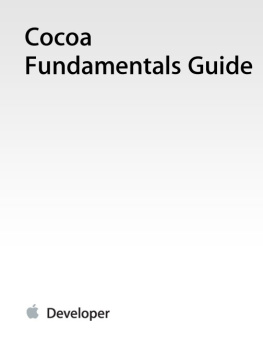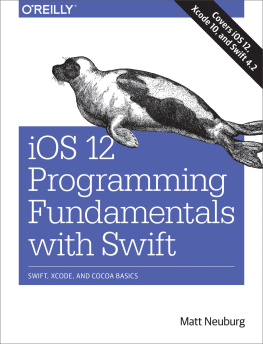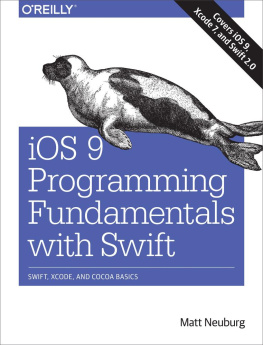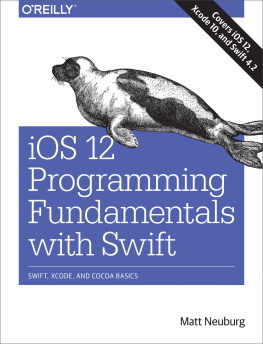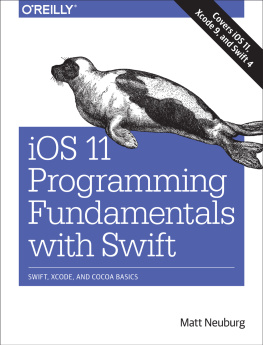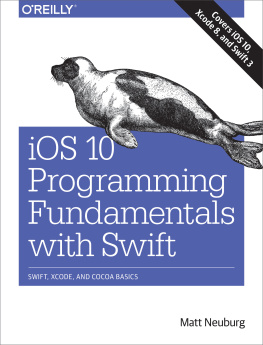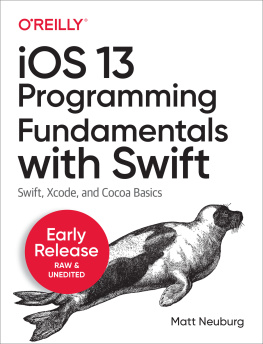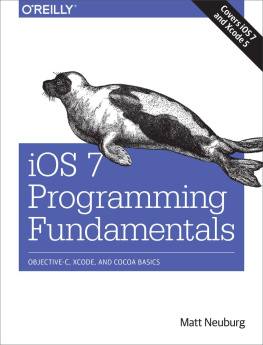coll. - Cocoa Fundamentals Guide
Here you can read online coll. - Cocoa Fundamentals Guide full text of the book (entire story) in english for free. Download pdf and epub, get meaning, cover and reviews about this ebook. year: 2012, publisher: Apple Inc., genre: Home and family. Description of the work, (preface) as well as reviews are available. Best literature library LitArk.com created for fans of good reading and offers a wide selection of genres:
Romance novel
Science fiction
Adventure
Detective
Science
History
Home and family
Prose
Art
Politics
Computer
Non-fiction
Religion
Business
Children
Humor
Choose a favorite category and find really read worthwhile books. Enjoy immersion in the world of imagination, feel the emotions of the characters or learn something new for yourself, make an fascinating discovery.
- Book:Cocoa Fundamentals Guide
- Author:
- Publisher:Apple Inc.
- Genre:
- Year:2012
- Rating:3 / 5
- Favourites:Add to favourites
- Your mark:
- 60
- 1
- 2
- 3
- 4
- 5
Cocoa Fundamentals Guide: summary, description and annotation
We offer to read an annotation, description, summary or preface (depends on what the author of the book "Cocoa Fundamentals Guide" wrote himself). If you haven't found the necessary information about the book — write in the comments, we will try to find it.
Cocoa Fundamentals Guide — read online for free the complete book (whole text) full work
Below is the text of the book, divided by pages. System saving the place of the last page read, allows you to conveniently read the book "Cocoa Fundamentals Guide" online for free, without having to search again every time where you left off. Put a bookmark, and you can go to the page where you finished reading at any time.
Font size:
Interval:
Bookmark:
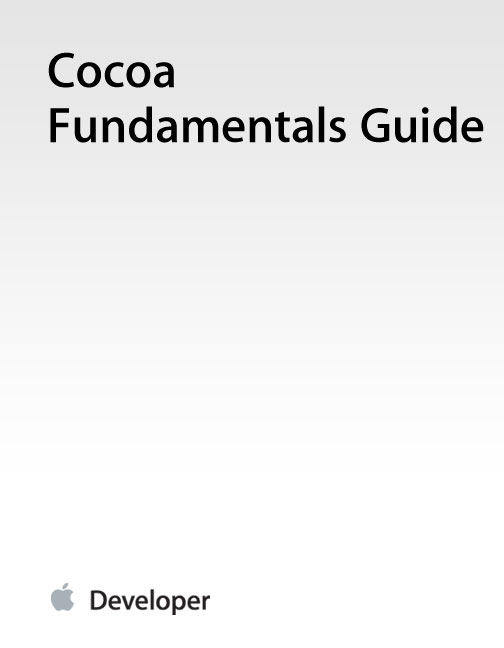
To a developer new to it, Cocoa might seem like a vast, uncharted new world of technology. The features, tools, concepts, designs, terminology, programming interfaces, and even programming language of this development environment may all be unfamiliar. Cocoa Fundamentals Guide eases the initial steps to Cocoa proficiency. It provides an orientation to the technological landscape that is Cocoa. It introduces its features, basic concepts, terminology, architectures, and underlying design patterns.
You can build Cocoa applications for two platforms: the Mac OS X operating system and iOS, the operating system for Multi-Touch devices such as iPhone, iPad, and iPod touch. Cocoa Fundamentals Guide presents Cocoa-related information for both platforms, integrating the information as much as possible and pointing out platform differences when necessary. The intent is that, as you become familiar with Cocoa for one platform, it will become easier to transfer that knowledge to software development for the other platform.
Cocoa Fundamentals Guide is structured to lead gradually to a general understanding of what Cocoa development is all about. It starts with the most basic informationwhat Cocoa is in terms of its components and capabilitiesand ends with an examination of its major architectures. Each chapter builds on what was explained in previous chapters. Each section gives the important details about a subject, yet describes it at only a high level. A section frequently refers you to another document that offers a more comprehensive description.
In the set of Cocoa developer documentation, Cocoa Fundamentals Guide is the conceptual entry-point document. It is prerequisite reading for other essential Cocoa guides, such as Cocoa Drawing Guide , View Programming Guide , and iOS Application Programming Guide . Cocoa Fundamentals Guide assumes little in terms of prerequisite reading, but readers should be proficient C programmers and should be familiar with the capabilities and technologies of the platform they will be developing for. For Mac OS X, you can acquire this familiarity by reading Mac OS X Technology Overview ; for iOS, read iOS Technology Overview .
Cocoa Fundamentals Guide has the following chapters:
introduces Cocoa from a functional and broadly architectural perspective, describing its features, frameworks, and development environment.
explains the advantages and basic use of Objective-C, plus the common behavior, interface, and life cycle of all Cocoa objects.
describes what it's like to write a program using a Cocoa framework and explains how to create a subclass.
describes the Cocoa adaptations of design patterns, especially Model-View-Controller and object modeling.
discusses the programming interfaces and mechanisms for communication between Cocoa objects, including delegation, notification, and bindings.
You can find several excellent third-party introductions to Cocoa in technical book stores. You can use these books to supplement what you learn in Cocoa Fundamentals Guide . In addition, there are a few other Apple publications that you should read when starting out as a Cocoa developer:
The Objective-C Programming Language describes the Objective-C programming language and runtime environment.
Model Object Implementation Guide discusses basic issues of subclass design and implementation.
Cocoa Application Tutorial shows you how to build a simple Cocoa application for Mac OS X using the Xcode development environment, the Cocoa frameworks, and Objective-C. Your First iOS Application is a tutorial that guides you through the creation of a simple iOS application, showing you along the way the basics of the Xcode development environment, Objective-C, and the Cocoa frameworks.
iOS Application Programming Guide presents information specific to the frameworks used to develop applications for devices running iOS.
Cocoa is an application environment for both the Mac OS X operating system and iOS, the operating system used on Multi-Touch devices such as iPhone, iPad, and iPod touch. It consists of a suite of object-oriented software libraries, a runtime system, and an integrated development environment.
Font size:
Interval:
Bookmark:
Similar books «Cocoa Fundamentals Guide»
Look at similar books to Cocoa Fundamentals Guide. We have selected literature similar in name and meaning in the hope of providing readers with more options to find new, interesting, not yet read works.
Discussion, reviews of the book Cocoa Fundamentals Guide and just readers' own opinions. Leave your comments, write what you think about the work, its meaning or the main characters. Specify what exactly you liked and what you didn't like, and why you think so.

